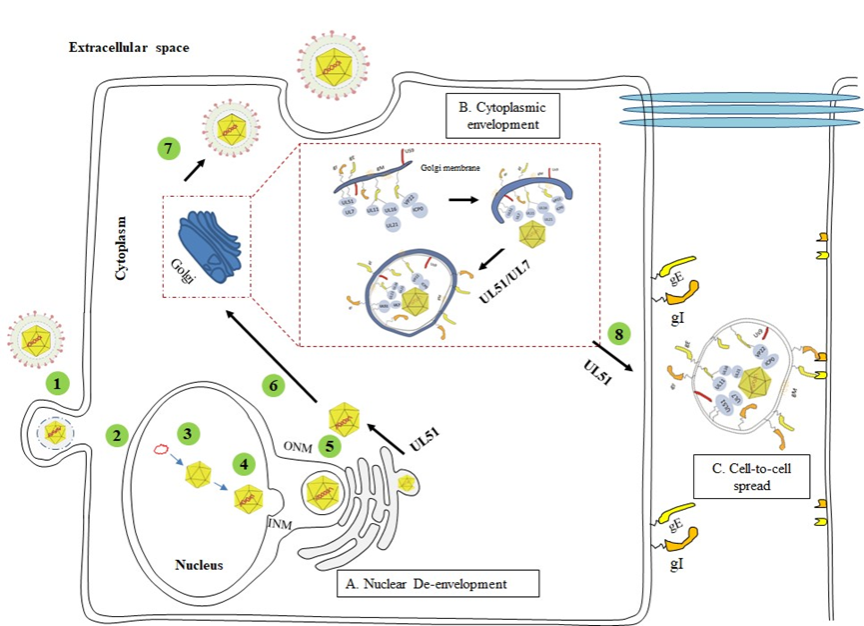The herpesvirus UL51 protein is a multifunctional tegument protein involved in the regulation of multiple aspects of the viral life cycle. This article reviews the biological characteristics of the UL51 protein and its functions in herpesviruses, including participating in the maintenance of the viral assembly complex (cVAC) during viral assembly, affecting the production of mature viral particles and promoting primary and secondary envelopment, as well as its positive impact on viral cell-to-cell spread (CCS) through interactions with multiple viral proteins and its key role in the proliferation and pathogenicity of the virus in the later stage of infection. This paper discusses how the UL51 protein participates in the life cycle of herpesviruses and provides new ideas for further research on UL51 protein function. Related content was published in Frontiers in Microbiology under the title ‘Functions of the UL51 protein during the herpesvirus life cycle’, doi: 10.3389/ fmicb.2024.1457582.

The complete process of the herpesvirus life cycle
(1) Viral entry into the host cell. (2) Unenveloped viral particles enter the nucleus. (3) Nucleic acid replication and cyclization. (4) Assembly of the nucleocapsid. (5) Primary envelopment (nuclear egress) and de-envelopment. (6) Secondary envelopment. (7) Maturation and release of virions. (8) CCS of virus particles.
A, The UL51 protein acts at a post-inner nuclear membrane envelopment step, possibly during the outer nuclear membrane de-envelopment process; B, UL51 and UL7 proteins form a stable heterodimer complex on the Golgi membrane, which interacts with the capsid protein and acts as a molecular tag of the Golgi, binding the nucleocapsid to the Golgi membrane embedded with glycoproteins to promote the maturation of the virus; C, HSV-1 UL51 protein promotes the transfer of viral particles to the extracellular junction of gE / gI and binds to the receptors of adjacent cells. Adapted from the literature (Chouljenko et al., 2012; Roller et al., 2014; Dogrammatzis et al., 2020).

